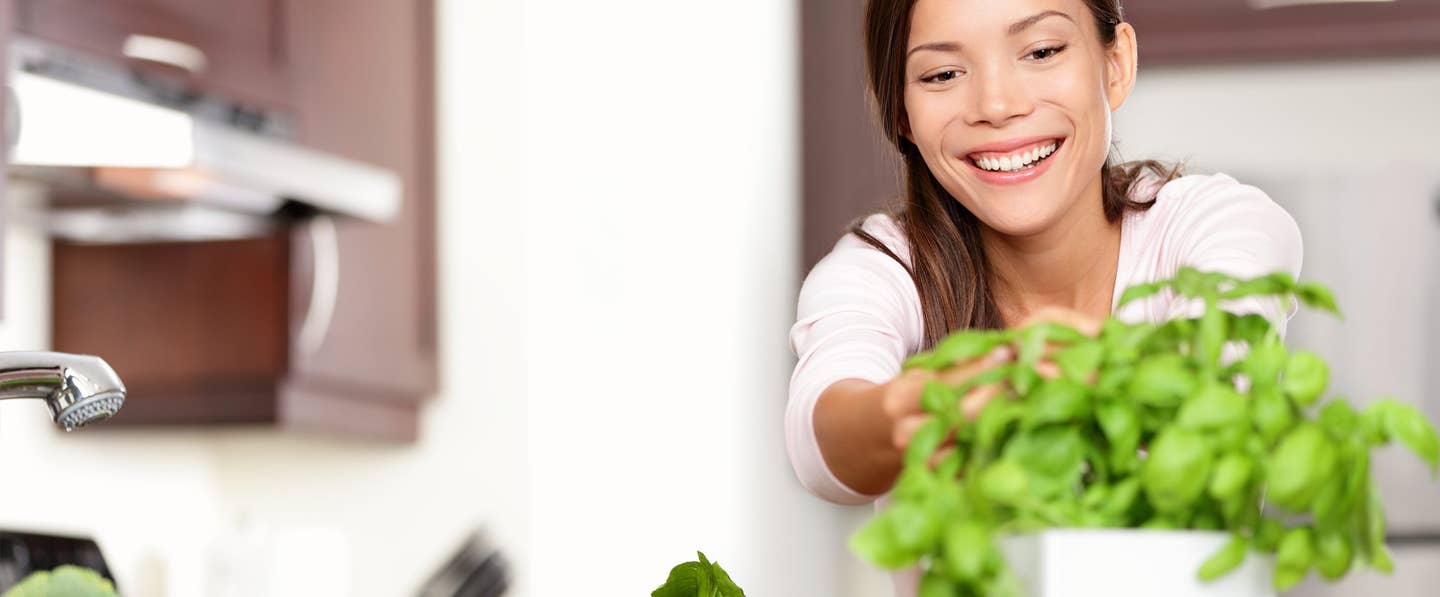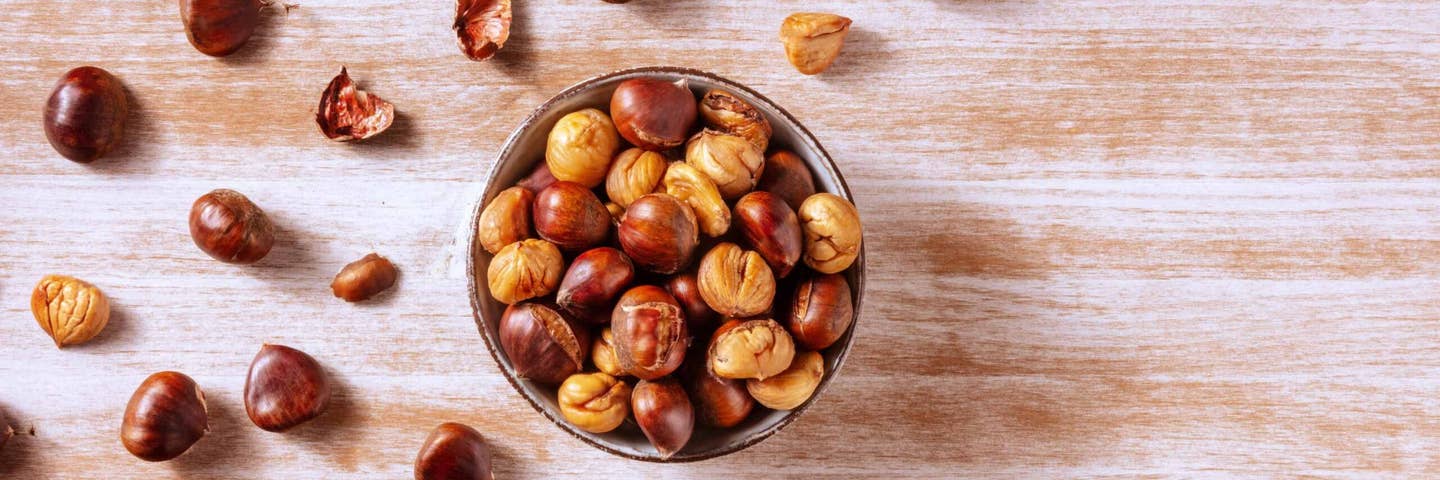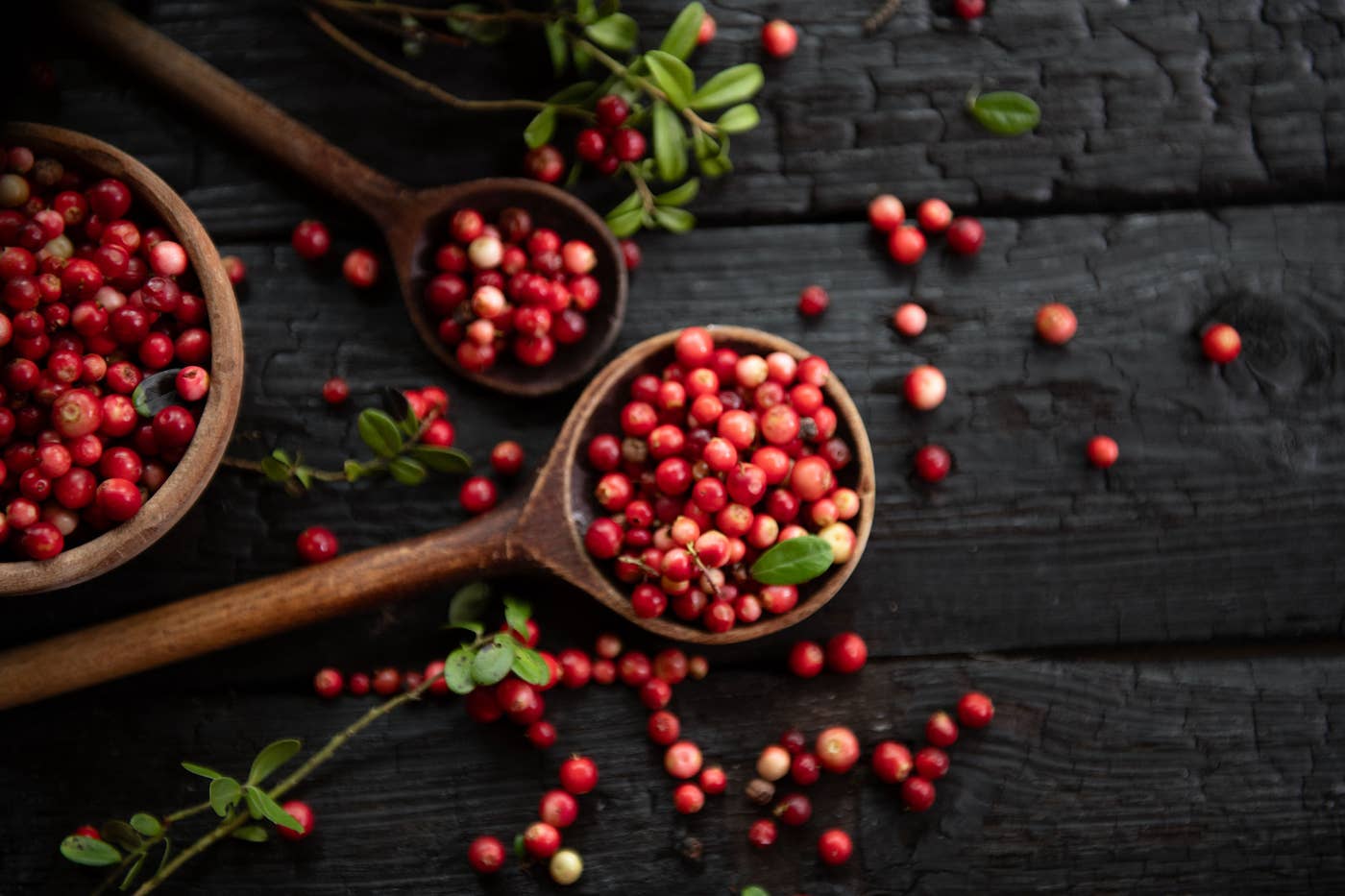The hot, sunny days of summer bring out the best in this aromatic herb. Here’s how to select, store, and prepare basil for maximum freshness and flavor, plus some tasty recipes to make with it.
How to Pick, Prep, and Store Fresh Basil
From June to September, when basil is abundant, pick up large, leafy bunches from local sources that show no signs of yellowing or wilting. Gently rub a leaf and take a whiff; it should have a pungent smell. (If not, choose another bunch.) Avoid bunches with buds or flowers: Mature, blossoming plants may have bitter leaves.
Basil plants thrive in the hot sun, but cut basil should be kept cool to prevent wilting and yellowing. Store stems bouquet-style in a jar of water in a shady spot in your kitchen so they won’t wilt prematurely. Keep it out of the fridge, where leaves tend to brown quickly.
When it comes to preparing the fresh herb, a quick blast of heat does the best job of heightening the herb’s fragrant flavor compounds, which don’t stand up well to longer cooking times. Add chopped or torn leaves as a finishing touch to soups, stews, pasta, grains, and beans.
Basil Varieties: Thai, Sweet, Cinnamon, and Greek
Sweet (or Italian) basil is the mild-tasting variety that’s familiar to most, but other types are available at garden stores and farmers markets. Thai basil has smaller leaves and a stronger anise flavor. There are also Greek, lemon, lime, and cinnamon varieties to choose from. Flavors vary a little, but they’re all interchangeable in recipes.
How to Grow Basil
Basil is easy to grow, and there’s nothing like picking fresh herbs right in your kitchen! Here’s how to do it.
- Plant two or three seedlings together in a full-sun garden spot or on a windowsill in a 1-qt. Pot. Planting multiples prevents overharvesting a single plant.
- Water every two or three days, or when the soil is dry.
- Pinch off large leaves and small leaf clusters just above a pair of new-growth leaves. Regular harvesting stimulates growth and keeps the plant full.
Everyday Uses
Basil can complement and heighten the flavor of a wide range of ingredients. Below are just a few ideas for incorporating it into your kitchen routine. Be generous as you sprinkle it on or stir it in: It’s almost impossible to overdo it with fresh basil!
- Summer veggies: Every summer vegetable goes with fresh basil. Tomatoes are a classic pairing, but the herb can be used to season everything from artichokes to zucchini. Roll just-steamed corn on the cob in chopped fresh basil for a mouthwatering summertime side.
- Fresh fruit: A cousin of mint, basil has a sweet side as well. It goes beautifully with berries, stone fruits (peaches and plums), melons, and citrus. Stir chopped basil into fruit salads, add a few leaves to smoothies, and tuck a few stems into fruit waters.
- Tomato sauce: Stir together 4 cups diced fresh tomatoes, 1 cup chopped fresh basil, ¼ cup finely chopped onion, and ½ teaspoon minced garlic. Serve over pasta, or use as an alternative to salsa or salad dressing.
- Gremolata: This oil- and nut-free condiment can be used in place of pesto: Purée 1 cup fresh basil leaves with 1 peeled clove garlic and 1 teaspoon finely grated lemon zest. Store in the fridge up to 3 days.
Using Dried in Place of Fresh Basil
No fresh basil on hand? You can use 1 teaspoon of dried for every 1 tablespoon of fresh that a recipe calls for. Dried herbs have a much more concentrated flavor than fresh.
More Basil Recipes to Try
Related News
Try Our Top-RatedMeal Planner Free

Forks Meal Planner takes the hard work out of making nutritious meals the whole family will enjoy.
SAVE $200 ON OUR ULTIMATE COURSE

Join our best-selling course at a new lower price!





